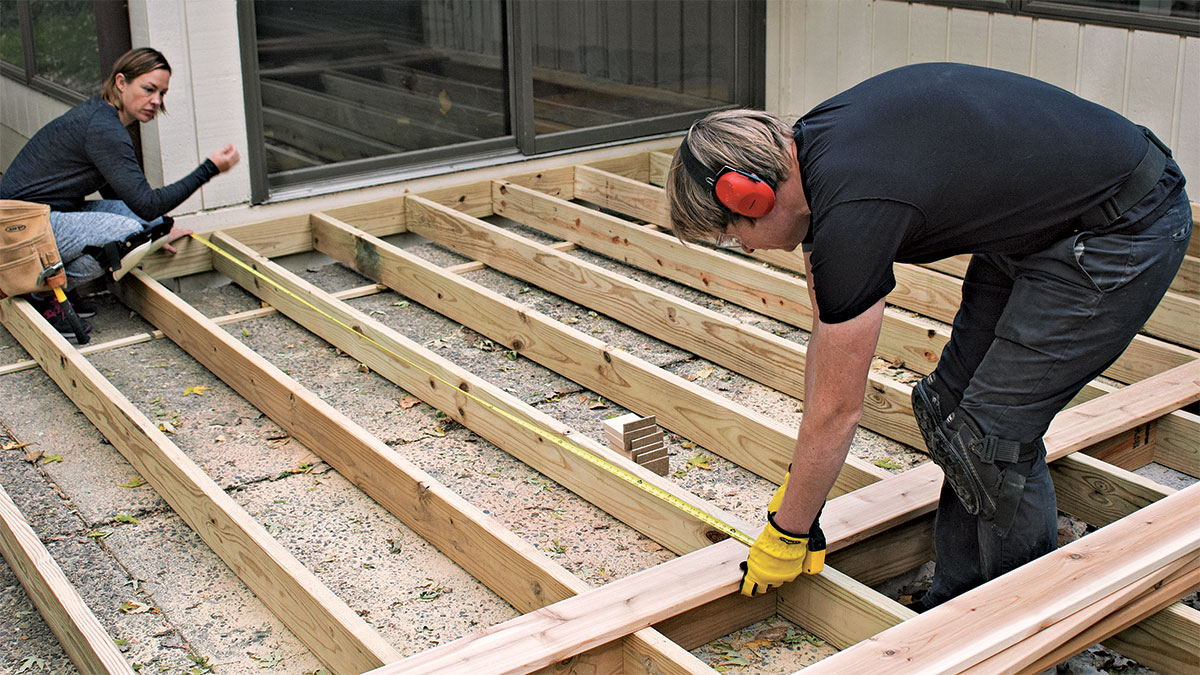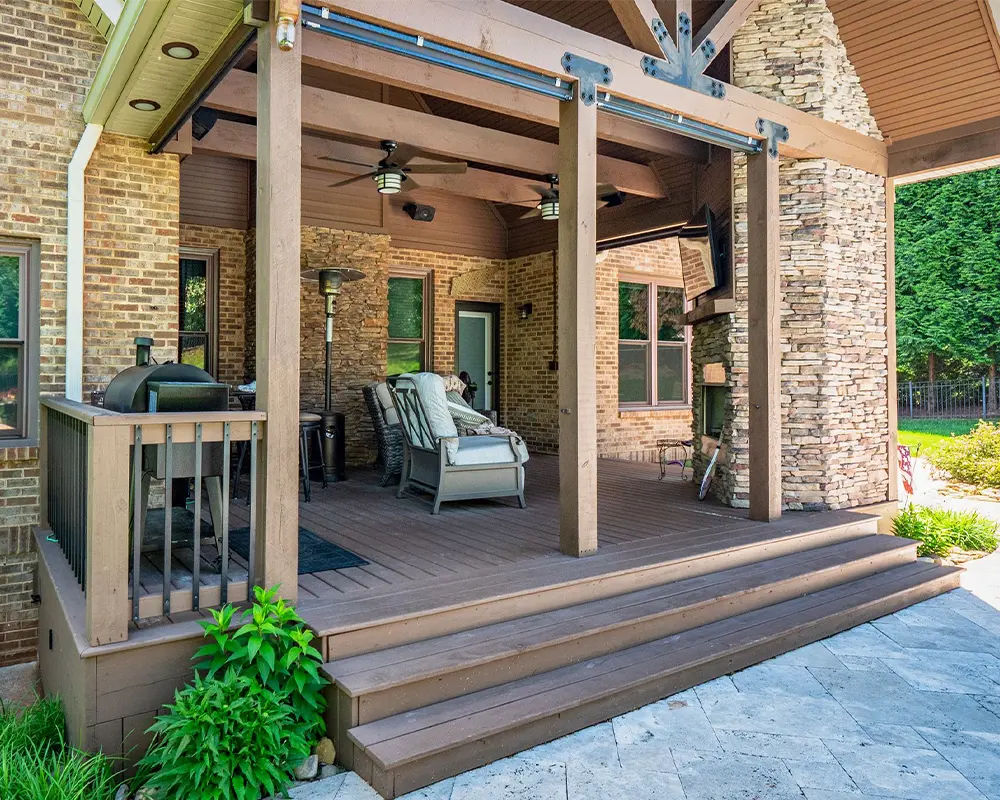Find peace of mind by hiring a licensed deck installer Austin who knows the local building codes.
Find peace of mind by hiring a licensed deck installer Austin who knows the local building codes.
Blog Article
Just how to Choose the Right Materials for Your Deck Installation Job
Choosing the ideal products for your deck installation project can seem complicated. There are numerous factors to consider, from sturdiness and upkeep to visual appeals and environmental impact. The choice between traditional wood and composite materials, each with its very own collection of benefits and downsides, can be especially difficult. The secret is to balance your budget plan, design preferences, and lifestyle requires to develop a deck that will certainly improve your outside space for years ahead.
Comprehending the Different Kinds of Deck Products
When beginning on a deck installment task, the choice of materials ends up being a crucial choice. Compound products, on the other hand, are a blend of wood and plastic, offering toughness and resistance to weather components. By recognizing these differences, home owners can make a much more educated choice on the most ideal deck product for their particular needs.
Examining the Sturdiness and Upkeep Demands of Deck Products
Analyzing the durability and maintenance requirements of deck products is a critical action in deck installment. Durability entails the product's capability to withstand harsh climate condition, deterioration, and its durability. For example, cedar and redwood are naturally immune to rot and bugs, making them long lasting options. On the various other hand, pressure-treated timber, while resilient, may call for more maintenance as a result of its vulnerability to breaking and warping.
Comprehending maintenance demands is equally crucial. Some materials call for regular securing or discoloring to keep their appearance and stand up to moisture damages, while others, like composite decking, demand much less upkeep. By reviewing these elements, one can pick the most suitable outdoor decking product, ensuring an equilibrium in between sturdiness, upkeep needs, and aesthetic allure.
Cost Analysis: Contrasting Timber and Composite Decking
Although cost might at first seem like a second worry, it is a considerable factor when contrasting wood and composite outdoor decking. On the other hand, composite outdoor decking, while more expensive initially, calls for less upkeep, potentially lowering long-lasting prices. Potential deck proprietors should consider their budget and desire to maintain their decks when making a decision between timber and composite outdoor decking.
Aesthetics and Style Flexibility of Decking Materials
While price is an important factor to consider, the aesthetic charm and layout versatility of outdoor decking materials likewise play a substantial role in the decision-making process. Various materials provide differing degrees of aesthetic charm. For example, natural wood outdoor decking provides a classic, classic look, while composite materials use a variety of shades and appearances to suit diverse tastes and designs. In a similar way, layout adaptability refers to the ability to shape and manipulate the decking material to meet particular style demands. Timber, for example, provides high style versatility due to its ease of cutting and forming. Compound products, while less flexible in design, are still adaptable sufficient for the majority of deck layouts. These aspects, as a result, are critical components in the option of decking product.
Ecological Effect of Decking Materials
When selecting decking products, one should take into consideration not only visual appeals and longevity, however additionally the environmental impact. It is necessary to analyze the sustainability of products and check out recycled outdoor decking options. Furthermore, recognizing the potential effect on local environments will make sure an extra environmentally accountable selection.
Evaluating Product Sustainability
In the world of deck construction, examining product sustainability is an important action. This entails evaluating the environmental impact of each prospective material, thinking about variables such as the power needed for its production, its carbon footprint, and its end-of-life disposal or recycling options. Wood is a sustainable resource, but unsustainable logging practices can lead to deforestation. Composite outdoor decking materials typically combine wood and plastic, reducing the need for brand-new wood but increasing dependence on fossil gas. Aluminum and other steels may be extra resilient and recyclable, however their extraction and handling can be energy-intensive. Therefore, the option of decking materials need to stabilize performance, looks, expense, and sustainability to ensure a liable and resilient installation.
Recycled Decking Choices

Composite outdoor decking is particularly prominent as a result of its sturdiness and convenience of maintenance. It's resistant to rot, bugs, and fading, making it a long-lasting see here choice. Recycled plastic outdoor decking, on the various other hand, is highly durable and calls for marginal upkeep. While these materials may carry a greater first cost, their durability and lowered ecological impact make them a smart financial investment for the eco-conscious homeowner.

Impact on Local Ecological Communities
While the advantages of utilizing recycled products for outdoor decking can not be overstated, it's equally crucial to take into consideration the broader environmental ramifications of these selections. The removal, handling, and transportation of materials can profoundly affect regional ecological communities. Logging for timber decking adds to habitat loss and climate modification. Even the manufacturing of composite products can launch harmful emissions. On the other hand, utilizing recycled or sustainably sourced materials can assist alleviate these impacts. In addition, taking into consideration the life-span of products can lower ecological influence; longer-lasting alternatives call for much less regular replacement, therefore preserving sources. Correct disposal of old decking is essential to reducing land fill waste. Basically, an eco-conscious deck project demands cautious material choice, lasting sourcing, and liable disposal.
Making Your Final Decision: Tips for Selecting the most effective Deck Materials
As the post transitions right into the subtopic of "Making Your Final Choice: Tips for Selecting the very best Deck Materials", it is vital to comprehend the selection of deck materials readily available. Striking an equilibrium between longevity and appearance is crucial in this choice process. The complying with conversation will certainly guide visitors in making an educated choice based upon these essential considerations.
Comprehending Various Deck Materials
The job of picking the right materials for your deck setup can seem discouraging as a result of the vast range of choices offered. Nonetheless, recognizing the various products can streamline this process. Wood is a prominent option, providing a traditional aesthetic and affordability. Types of timber made use of consist of pressure-treated lumber, cedar, and redwood. Compound materials, made from a blend of timber and plastic, are low-maintenance and immune to rot and bugs. Vinyl or PVC decks are much more sturdy and call for less upkeep than composite products, however they can look less natural. Last but not least, light weight aluminum decks are strong, lightweight, and immune to rot, however they are likewise the most pricey choice. Each product has its own advantages and disadvantages, making it vital to consider your certain needs prior to making a final choice.
Durability vs. Aesthetics Balance
Stabilizing resilience with aesthetics can be a difficulty when picking deck materials. The decision usually boils down to personal choices and the deck's intended use. High-traffic locations might demand durable products like composite decking, which stands up to wear and tear however may do not have the natural appeal of timber. On explanation the other hand, wood uses a classic appeal and heat that artificial materials struggle to replicate. It requires much more upkeep and might not last as long. Consequently, homeowners need to strike a balance, taking into consideration both the deck's sensible needs and their visual choices. By doing so, they can guarantee their deck click over here now continues to be a useful and eye-catching exterior room for several years to find.
Final thought
Finally, selecting the appropriate materials for your deck setup task requires mindful consideration of aspects such as durability, maintenance, expense, aesthetics, and environmental effect. Whether you choose conventional wood or composite products, your selection should align with your budget plan, style choices, and way of living. Ultimately, the very best decking material is one that improves your outside space and gives satisfaction for years ahead.
Report this page